Overview
In this project I have made several roles, Game Designer, Level Designer, UI designer and Puzzle Designer. I was part of the Player scrum, Stage scrum, UI scrum, Puzzle scrum. I had to adapt to a technology that is changing daily, and thanks to the programming work was the most stable and easy to learn to use.
My work was: conceptualization - iteration - realization - iteration - QA. Everything came out with the best quality for each delivery, in all the departments that I have been.
Game Conceptualization
With the Game Designer Fran Ruiz, we designed several movement systems, and different combat systems. The movement system chosen was movement by tiles, and the combat system chosen was combat by tiles. I was at the beginning to make proposals for possible levels that we could have taken from the game of thrones series.
Movement System
The system of movement by tiles, is based on the legend of grimrock. We realized that it was easier to implement, and the only bad thing was not accessible to new users who had never played this type of games. So I designed a new system of controls for the keyboard and mouse more easier and then added the controller as a novelty on this type of games.
The controller is more accessible than the keyboard with mouse. In the controller controls are better concentrated and it is much easier to learn for new players. The surveys that we do, we realize, people preferred to use command instead of keyboard and mouse.
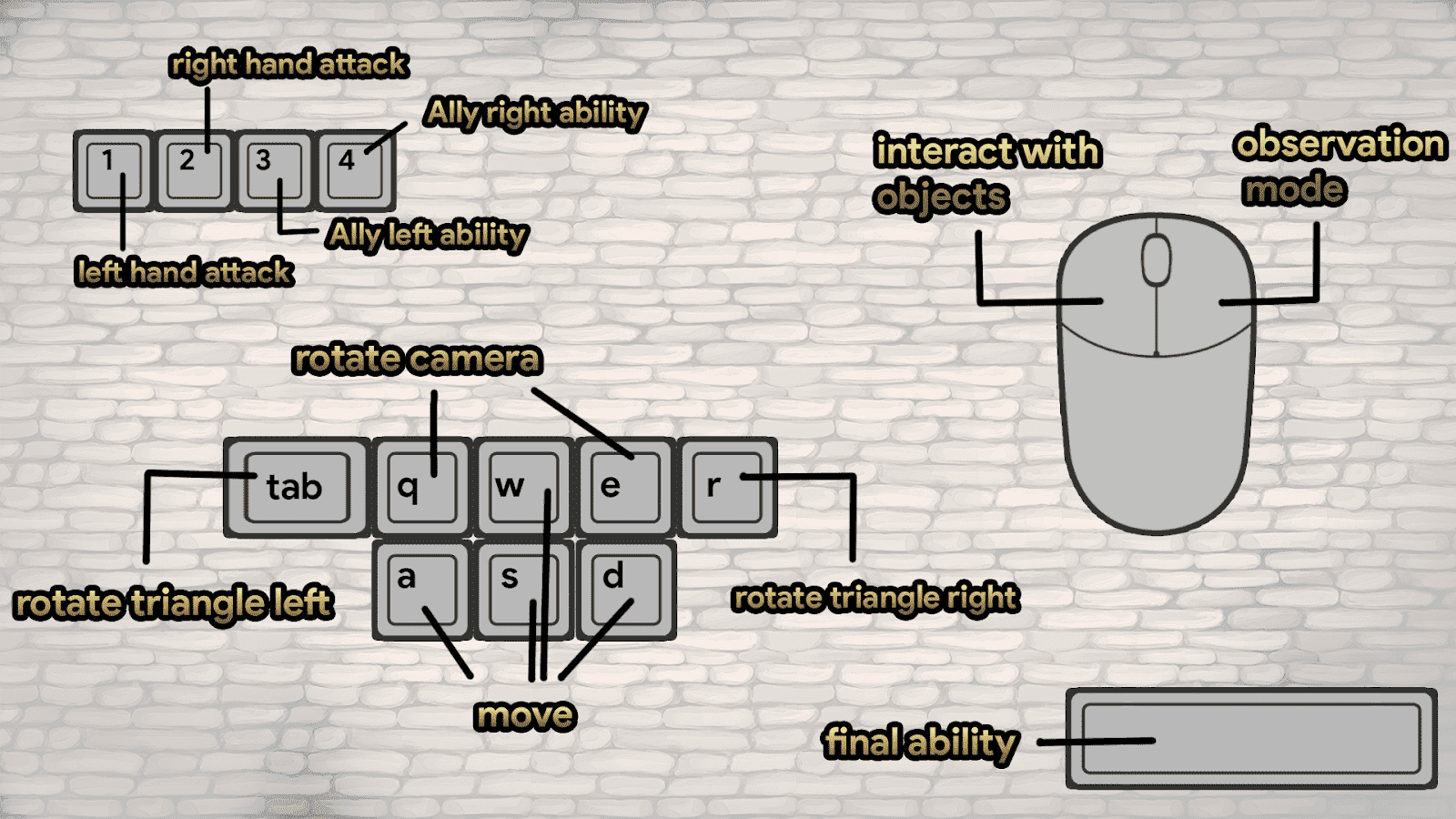
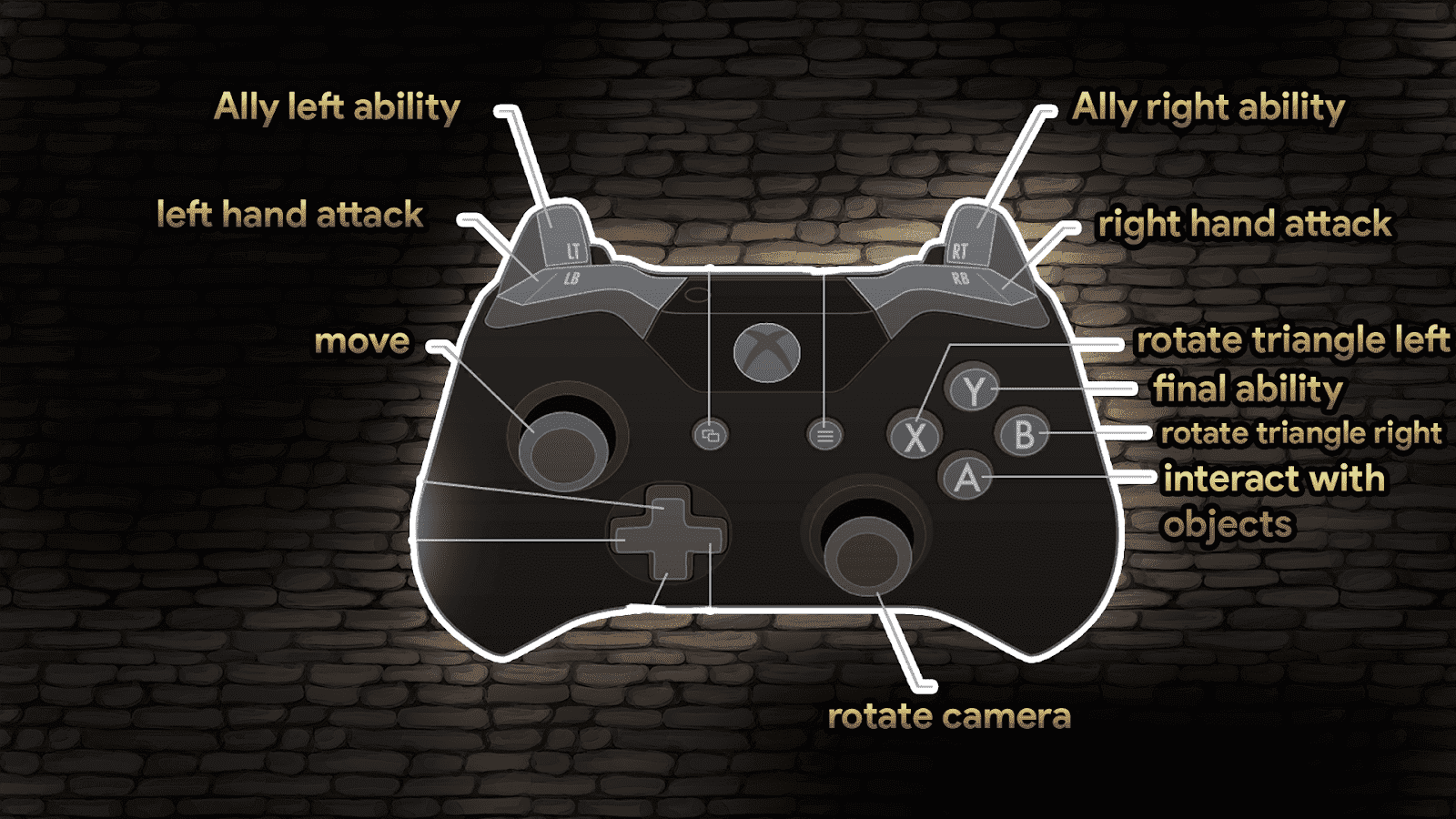
Combat System
The combat system by tiles the player has three characters, always in a triangular position. Being one will be in the front line, and the other two will stay on the back.
The player has the main attacks of each character, but each character that is in the rear provides a secondary ability, which can be used at any time. The player can make combinations and rotations that are more optimal for each fight.
Using the main skills, count as an action, the player have to hold a few seconds to re-use another main attack. On the other hand you can throw the secondaries even when you do the main one.
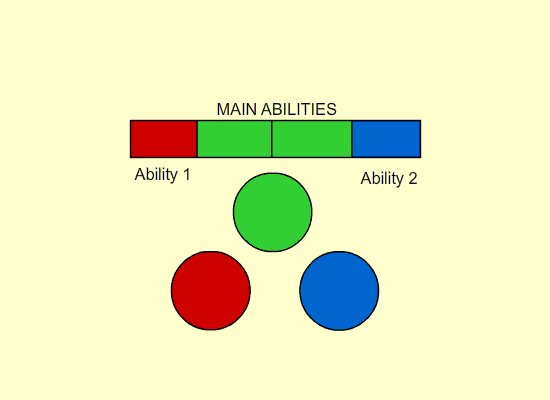
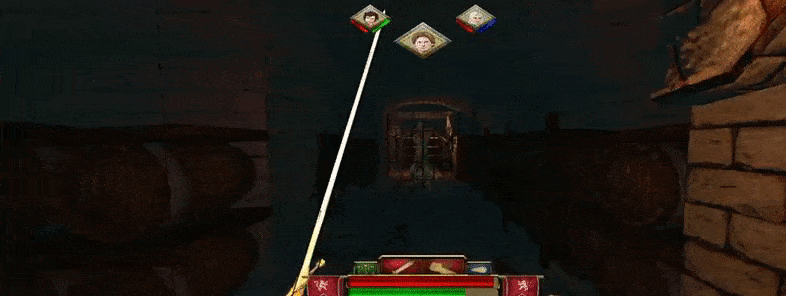
Level Design
In the department of Level Design, I was in charge of designing, concept maps of level one. then the Lead Designer Marc Lopez, took the task of level one, and I stayed making level two.
My task as level designer, was first to make proposals of maps with the tiled, then take them to the engine, prepare the prefabs for the assembly of the stage, and mount the stage with the tool provided by Elliot Jiménez. with colliders, lights, doors, levers, the respective puzzles. Then the following days was to check that everything was in the expected quality and to solve the errors that the map had.
Level 2 Design
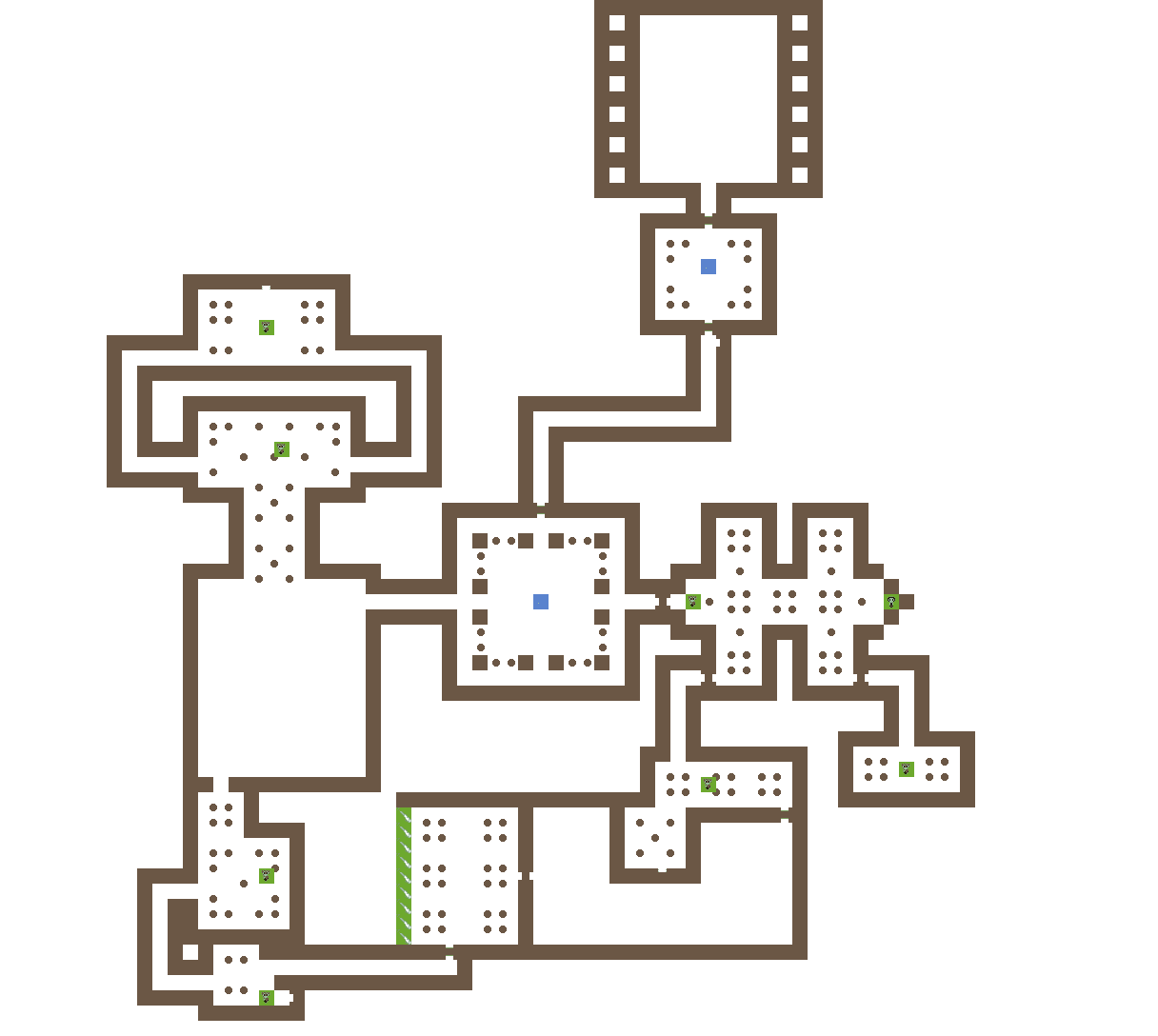
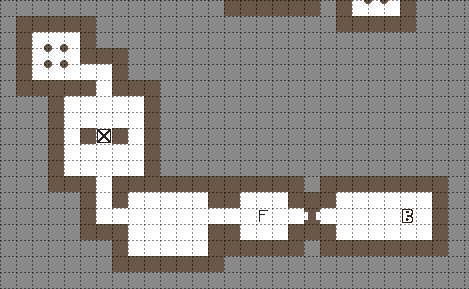
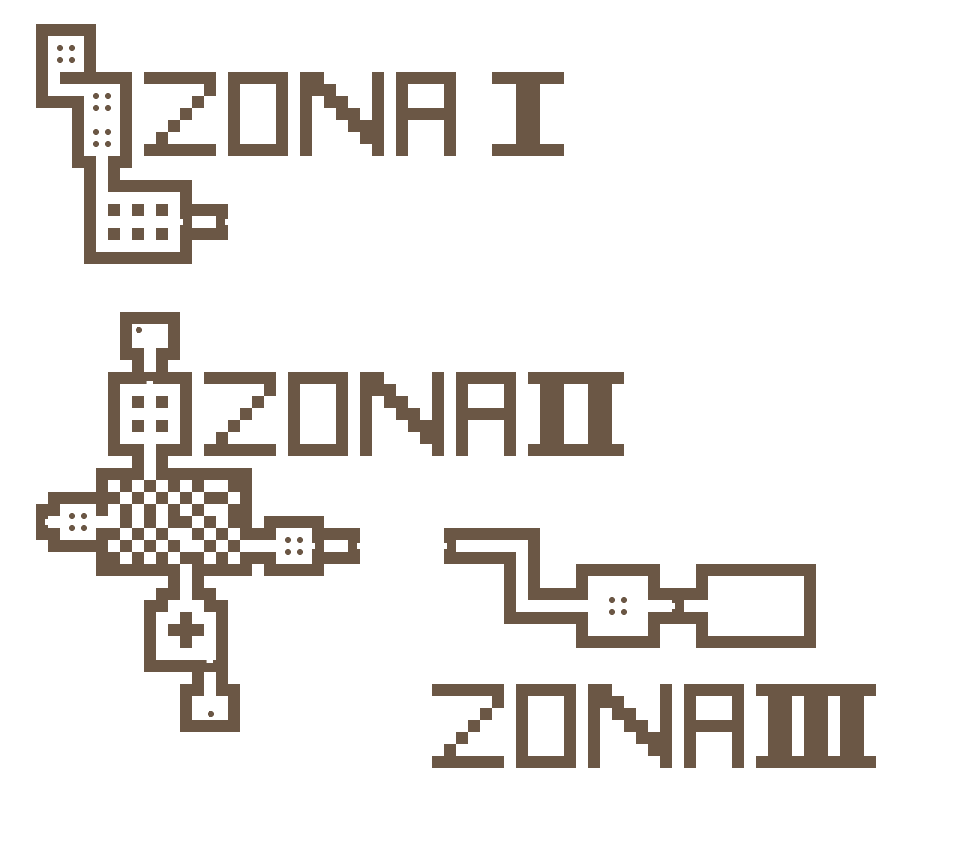
At the beginning I had several problems with the design of the level, since the first proposal was badly carried out because of me. Thanks to the lead artist Daniel Olondriz to give me one opportunity, help me with the prefabs and he explained how to use them correctly. A design of a level two (demo) was made, as fast as possible.
Then the level 2 was re-do with the new zones system, I was did a new design for the levels by zones, leaving the next disposition in level two.
- Level 2 Zone 1: Zone for adaptation the player, to acclimatize to new enemies stronger than the previous level. An expert player spends in five minutes, a new player can take ten to twelve minutes to pass the level. Start room, first Enemy room, Second Enemy room, Next Level.
- Level 2 Zone 2: A completely different pacing was proposed, the player will have to move in a room that is constantly changing, and go to the different rooms to find the levers to open the door that will take you to the boss area. An expert player can take between 10 minutes, and a novice player can take about 15 or 20 minutes to pass the level.Fountain room, Big Puzzle room, Enemy room, 1 Lever room 1, Big Puzzle Room, Enemy room 2, Lever room 2, Fountair room 2, Next Level.
- Level 2 Zone 3: Talking to the boss department, they told me what they needed for the level. Basically the level seeks to make the player nervous, because the player do the final showdown. An expert player can reach the boss room in 1 min 5 sec, and a novice player can take 3 min. Run, Enemy Dead Room, Boss Room, End Game.
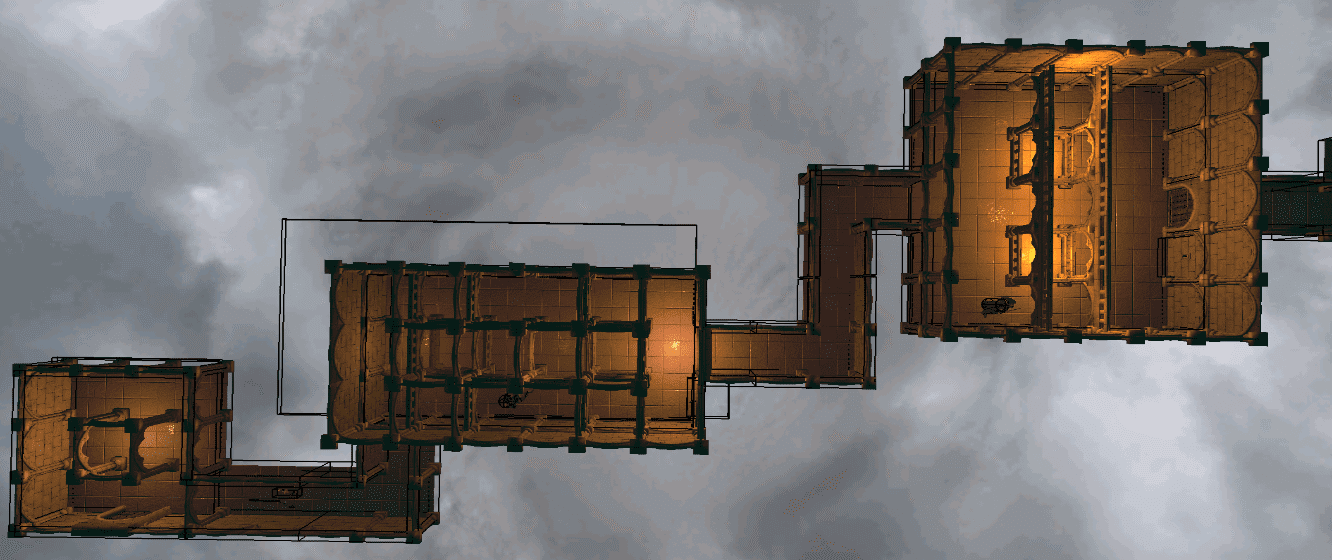
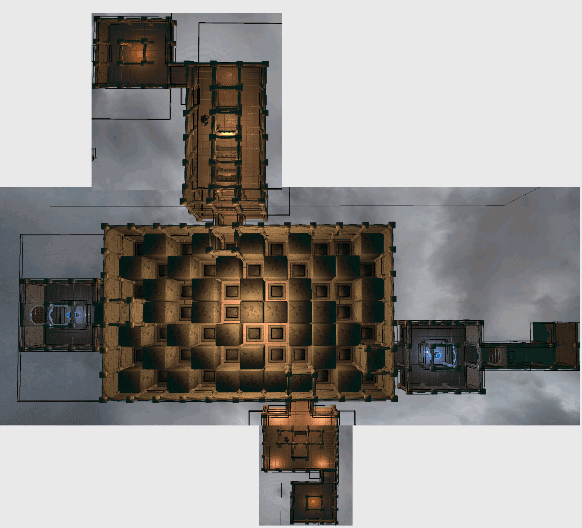
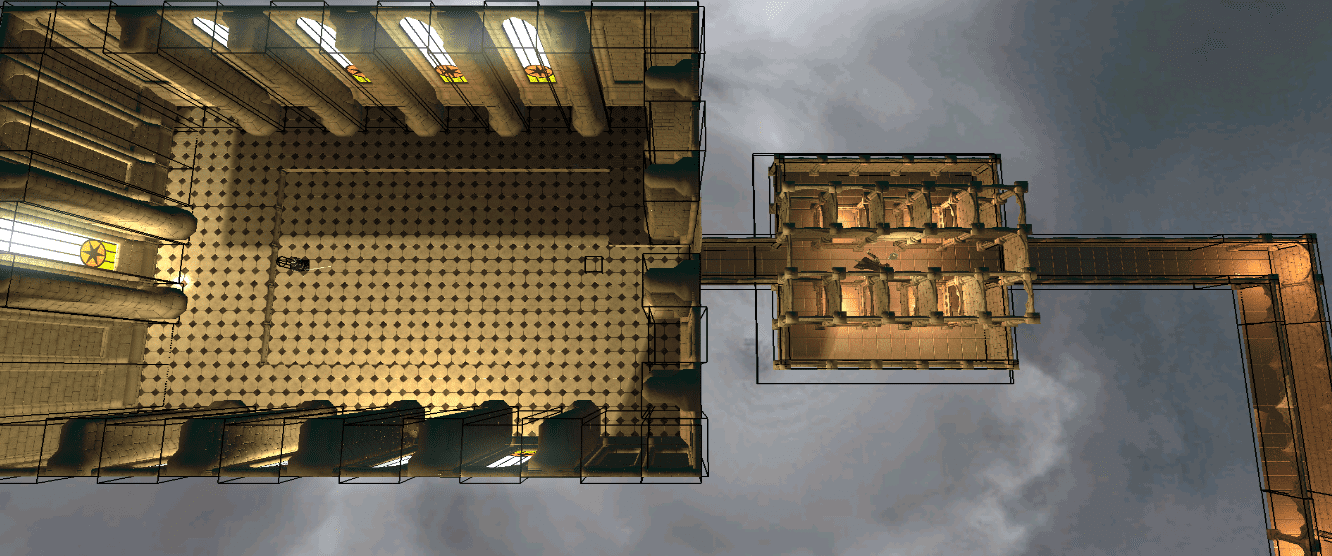
Puzzle Design
Since the vertical slice 2, I was in the Puzzle Design department. First investigating possible puzzles that we could do in the game, studying other games, and also our reference game the legend of Grimrock 1 and 2. I realized the puzzles that were used were often mechanics that are reused or mixed with others to make new puzzles.
I also got ideas for puzzles that would be easy to do, since they told me to design puzzles that could be implemented in an afternoon and were not binary. And This is my goal. The puzzles that appeared were the barrels in the wildfire, and the puzzle of the alternate room.
Wildfire puzzle
This puzzle has been the most expensive of all the puzzles, since at first we tried to make an idea that was very far-fetched for the number of people that were in the scrum. So the result was pretty bad.
This puzzle is completely redesigned, based on what we had done before, leaving a puzzle that has a very high learning cycle, but at the same time it is quite fun, which requires only memory and speed. Every time you play, it always poses a challenge because it changes all the time.
The puzzle consists of a medieval crane who transports barrels. When the lever is active, the puzzle starts. At First the path of barrels begins to emerge and the player has to memorize, and then they are complemented with other filling barrels to disorient the player. And the player has to go through the path that was shown to him at the beginning.
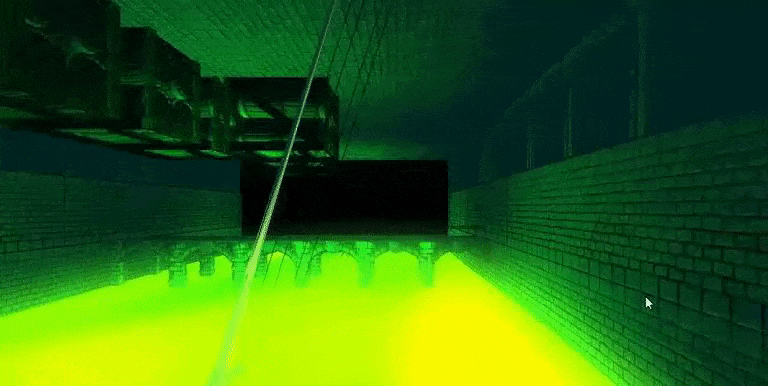
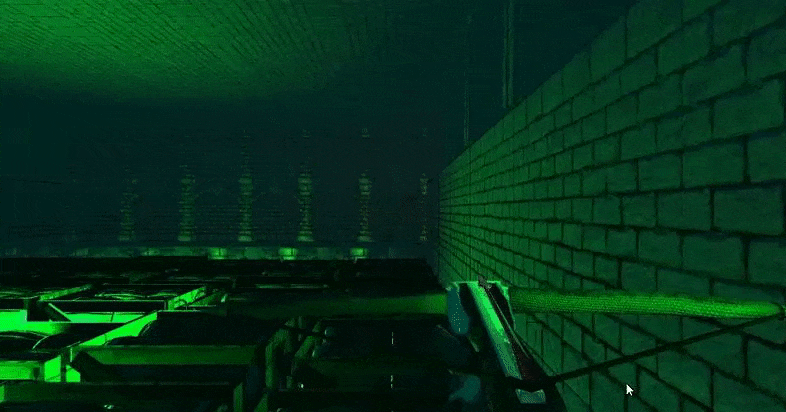
Alternate room puzzle
It is a puzzle that contains in itself a very simple mechanics to learn, this puzzle not require a special ability. it is a puzzle that can be completed trial and error. The reports that we have received from the puzzle is the most fun in the game.
To do the puzzle, first I think about the mechanic of the pressure plates who went up and down things. Later, together with the programmer Carlos Cabreira, we gave him another iteration, concluding that we could make a room that was changing with the pressure plates, and the player has to move through it.
The puzzle consists of a room with blocks that go up and down with the pressure plates, making different paths and different possibilities. The good thing is the puzzle room in level two is designed so that you have to move through the puzzle to find the objectives and you lost the path and find another time the path. This puzzle is so organic for the players
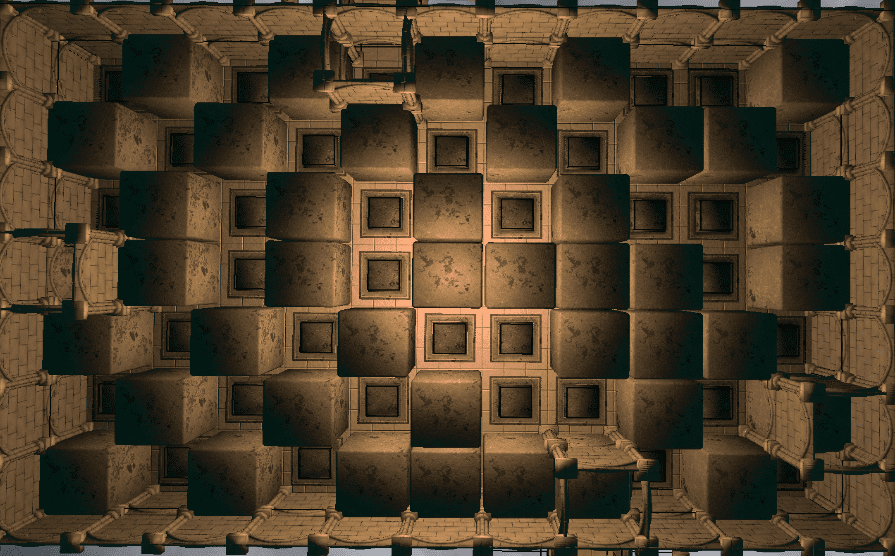
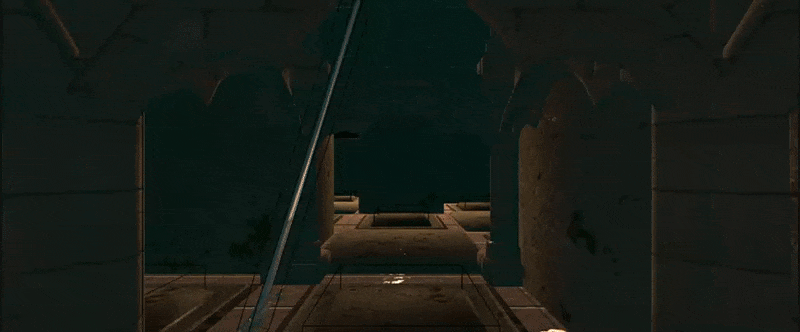
UI Design
Since of beginning of the project to the delivery of alpha 2, I was stayed in the UI department. What they asked us about the game is that it was a Legend of grimrock but much more accessible. So seeing the UI of the Legend of Grimrock, I realized that it was not very accessible to new users, and thinking about our game a completely different UI was proposed.
Apart from the conceptualization and research work, I genere mockups for the art and programming departments. These mockups I did every time with different programs to try me, and see what they were best understood by my colleagues in the department. Once I received the art and the programming part, I put everything in the engine.
One of the best ideas was to make the prototype with unity. I could assemble the mockups for the art department more fast than Axure, and programing the functionality who the programmers had to do. They told me that they understood better than just generating a mockup and then a document to comment the functionality.
I was in charge of the HUD of the player, of the HUD of the player when it enters the room of the Boss, and of the first menus, and score menus until they were changed in alpha 2 for other game designer.
Programs Used
- Adobe Photoshop
- Adobe XD
- Axure
- Unity
Mockups and Concepts
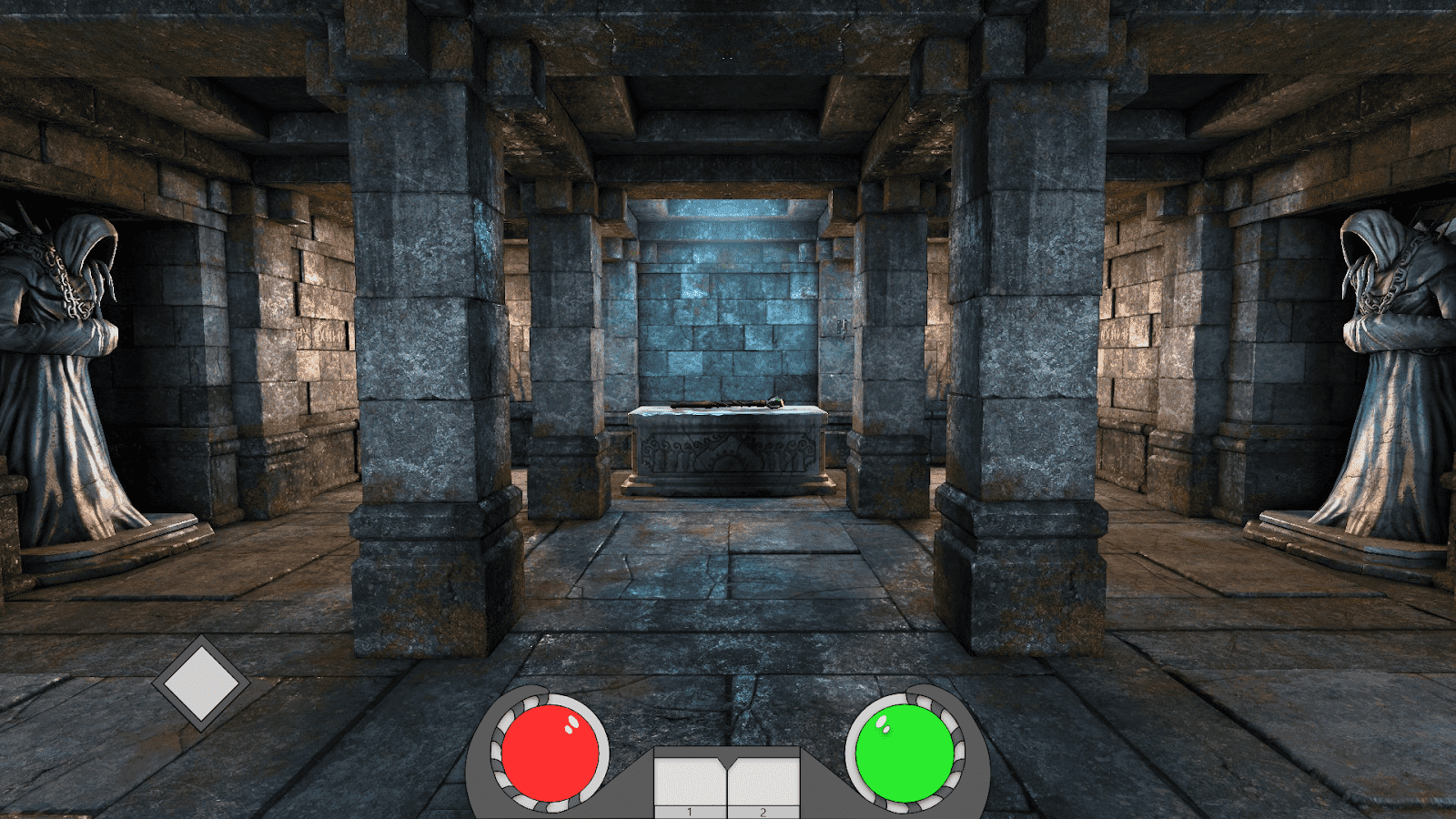
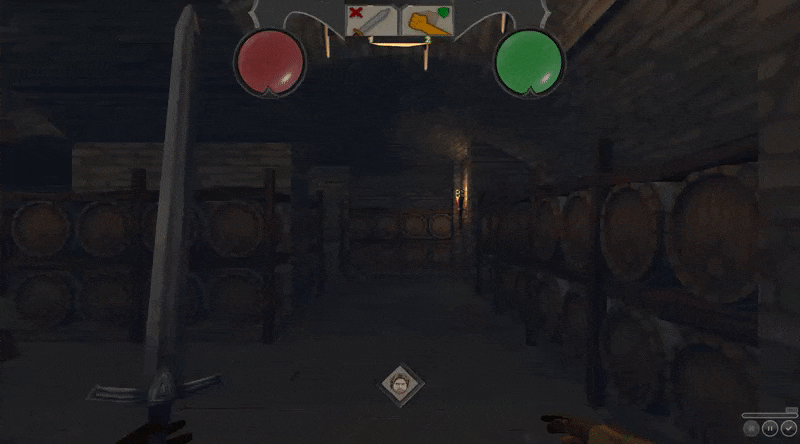
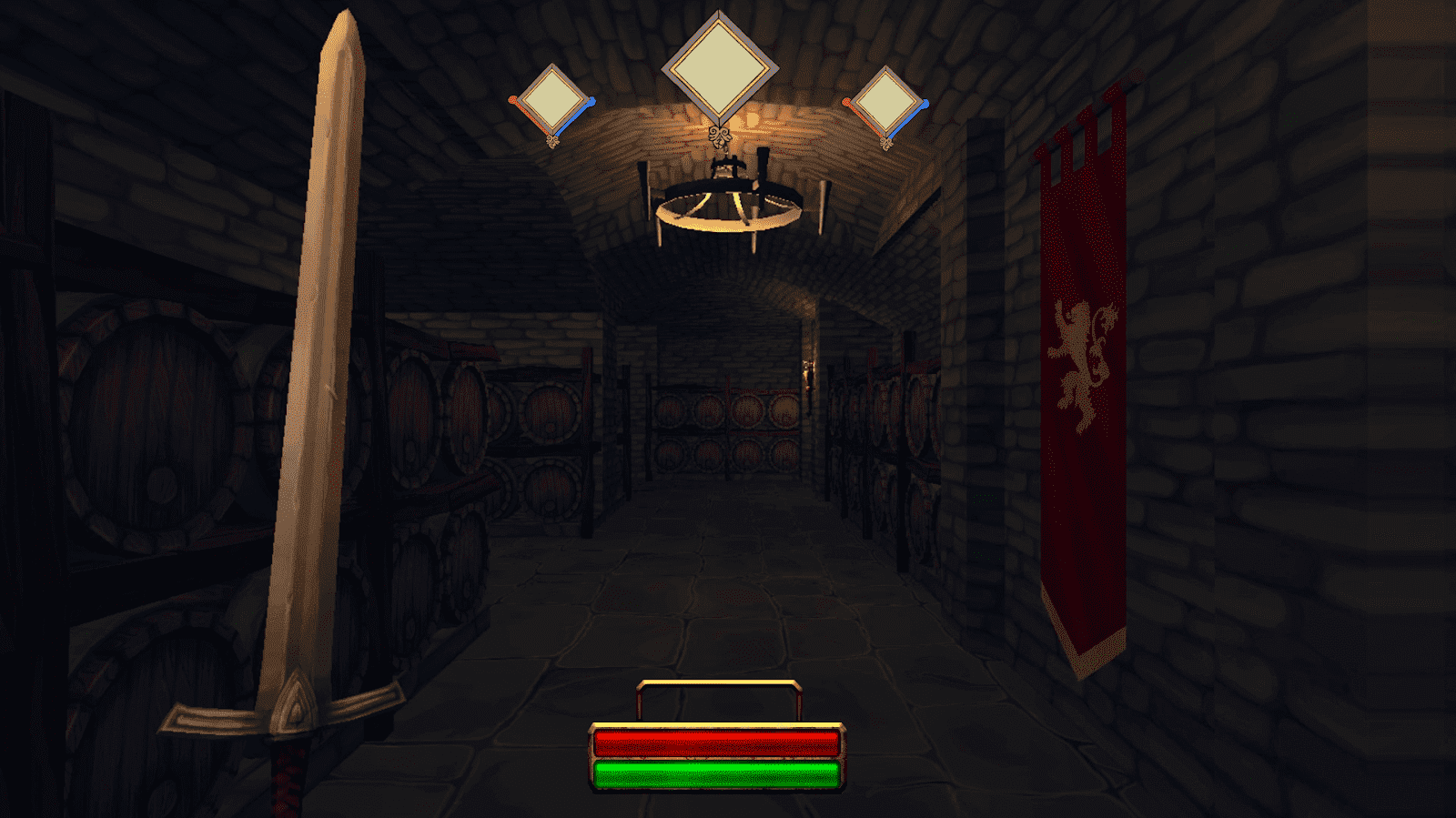
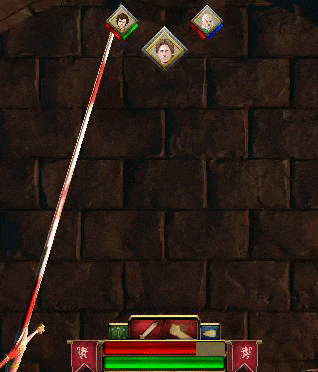
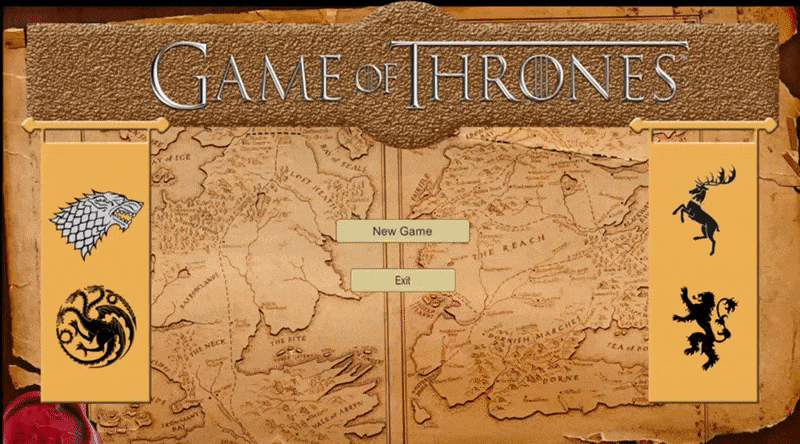
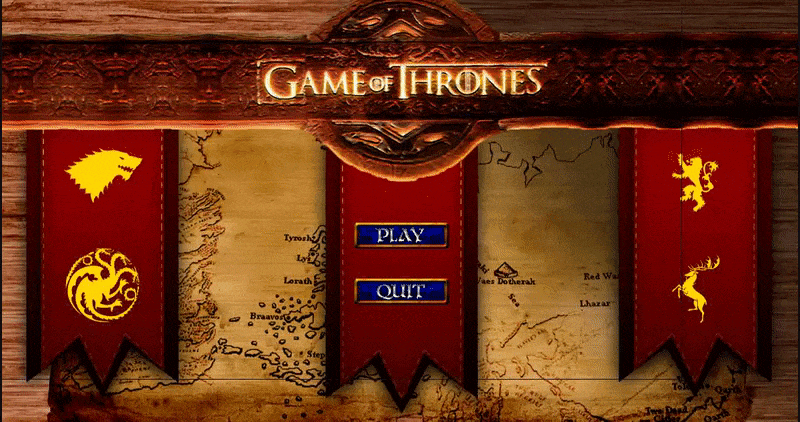
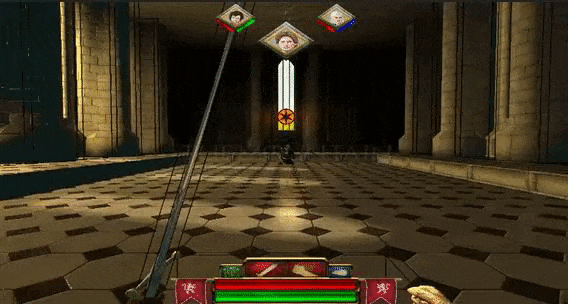
Not Implemented
Observation Mode
With the Game Designer Fran Ruiz, we designed several movement systems, and designed a free camera mode. The player can press a button that releases the camera from the axes, and can move it freely to observe its surroundings.
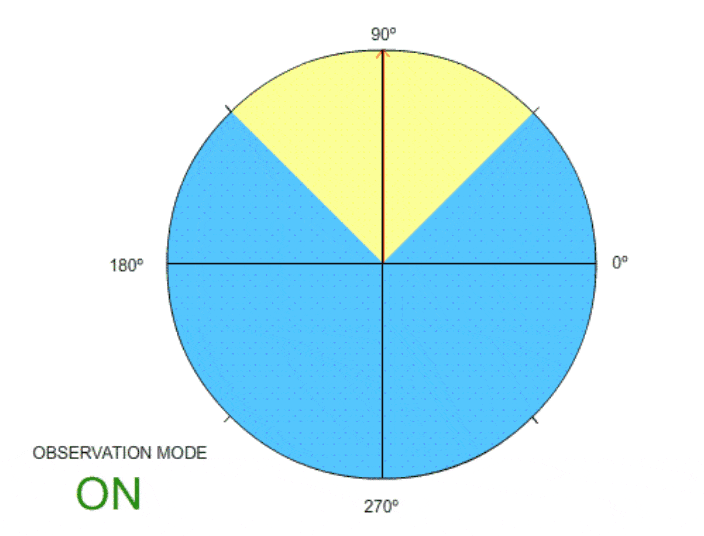
Level Design: Sorrows
At the beginning of the game, I was in charge of making a proposal of level design, of a known place of game of thrones. The sorrows.
The lost citadel of Chroyane, because of a curse that they said the prince had, this curse was the disease of psoriagris. This disease spread the panic of the city, leaving it at the end of the abyss. In the end it was called the swamp of stone men because of the disease.
The protagonists must enter an ancient city of gold and receive a cure for the sickness of stone men.
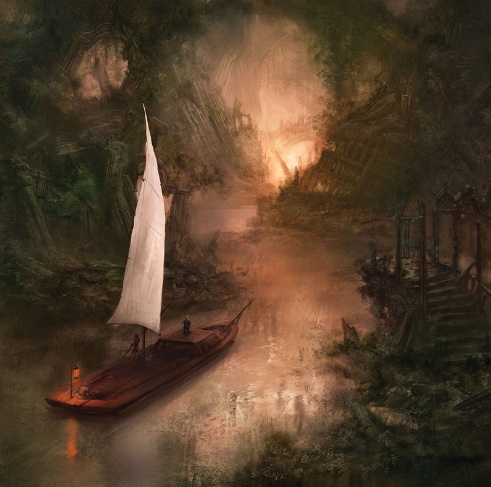
Play Testing
With the designers Fran Ruiz, and Aleix Cardona, we take care of doing an extensive survey for the play testing that we did open to the public.
Being a great experience not only of learning, also to see how unknown people play the game, and see how they react. Everything we got from the play tests was modified in the game.
